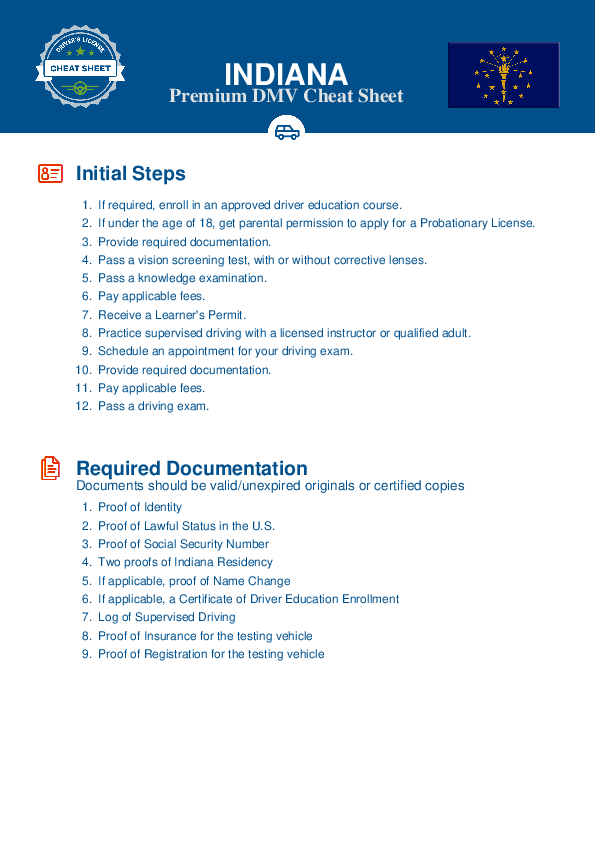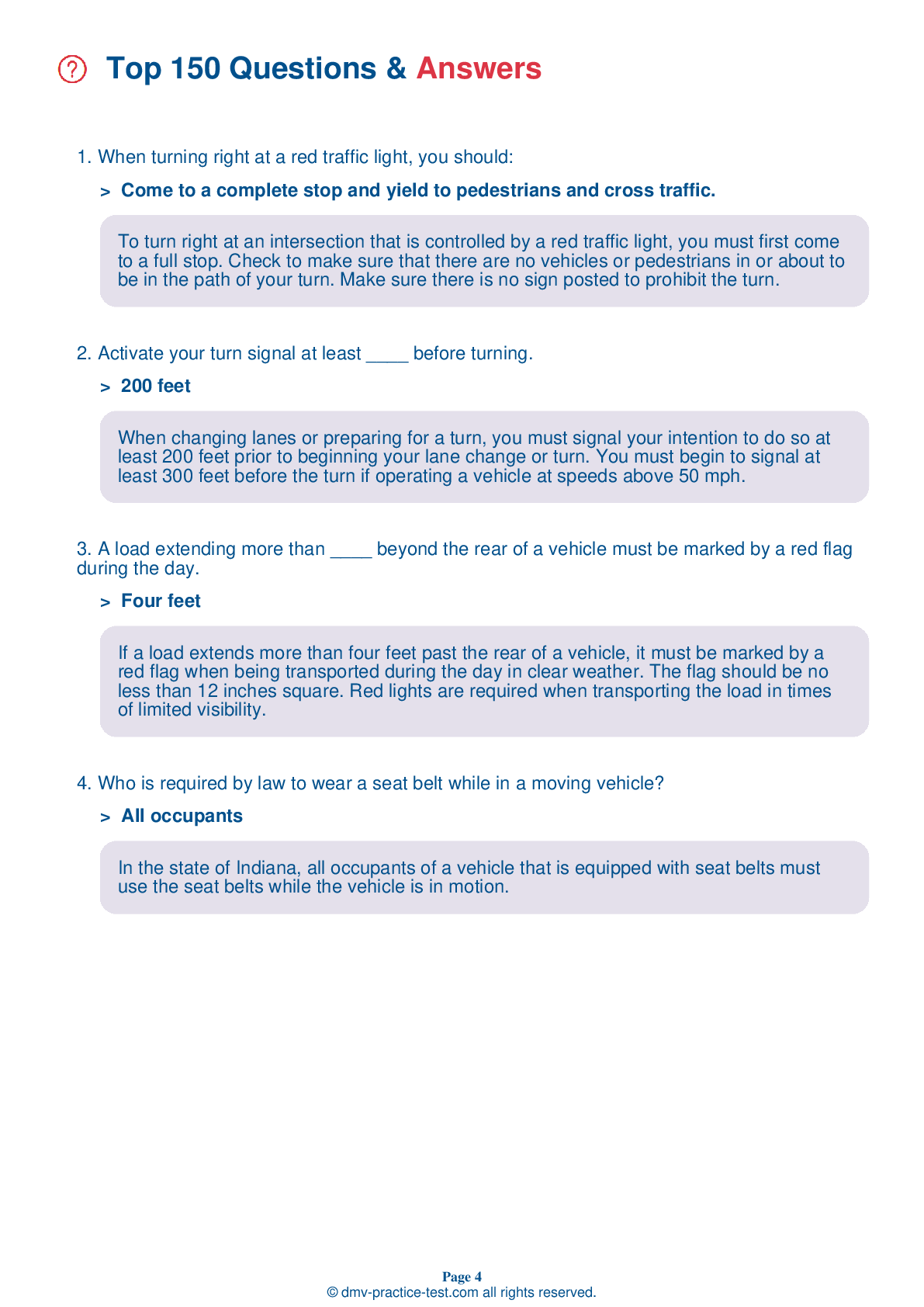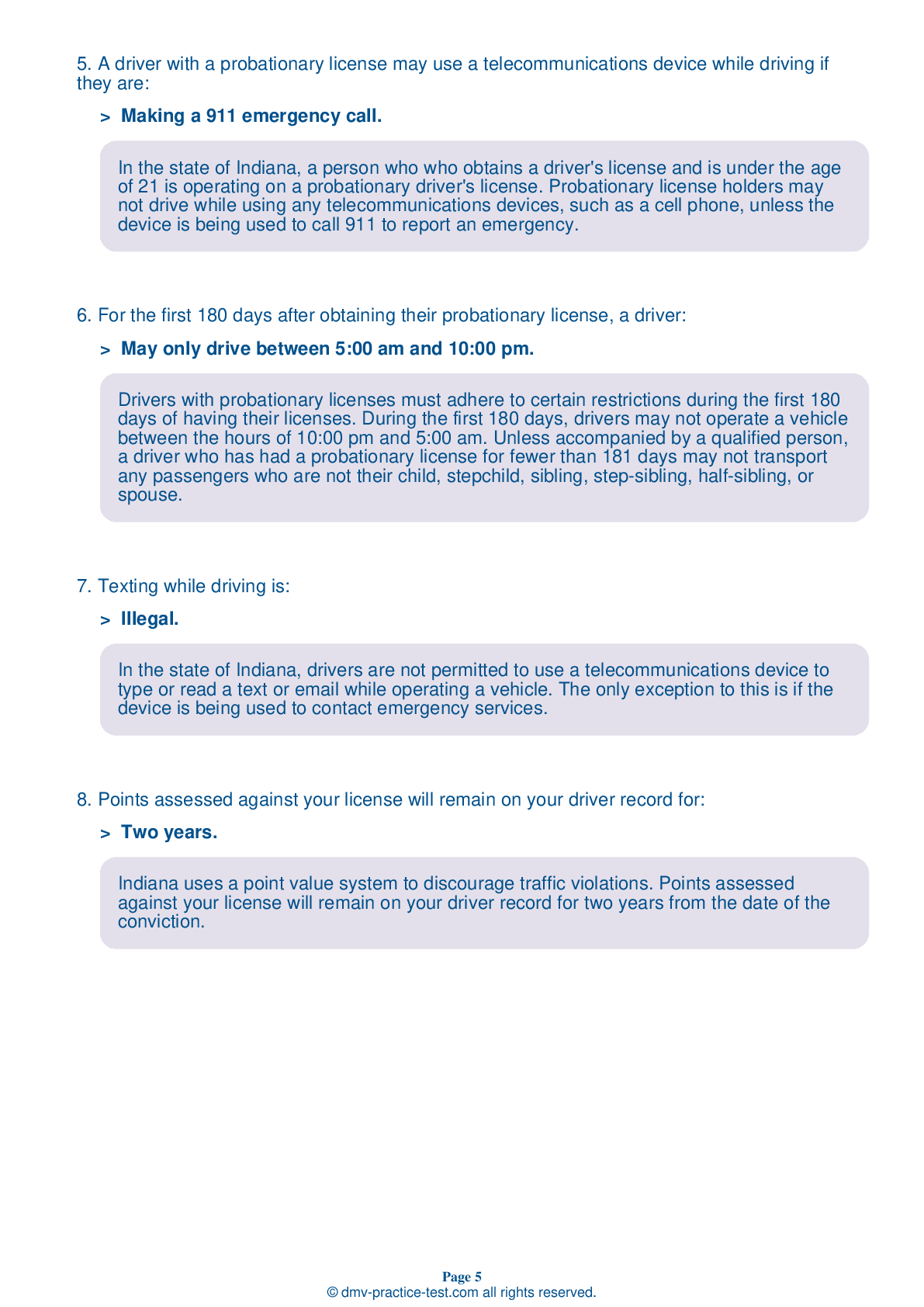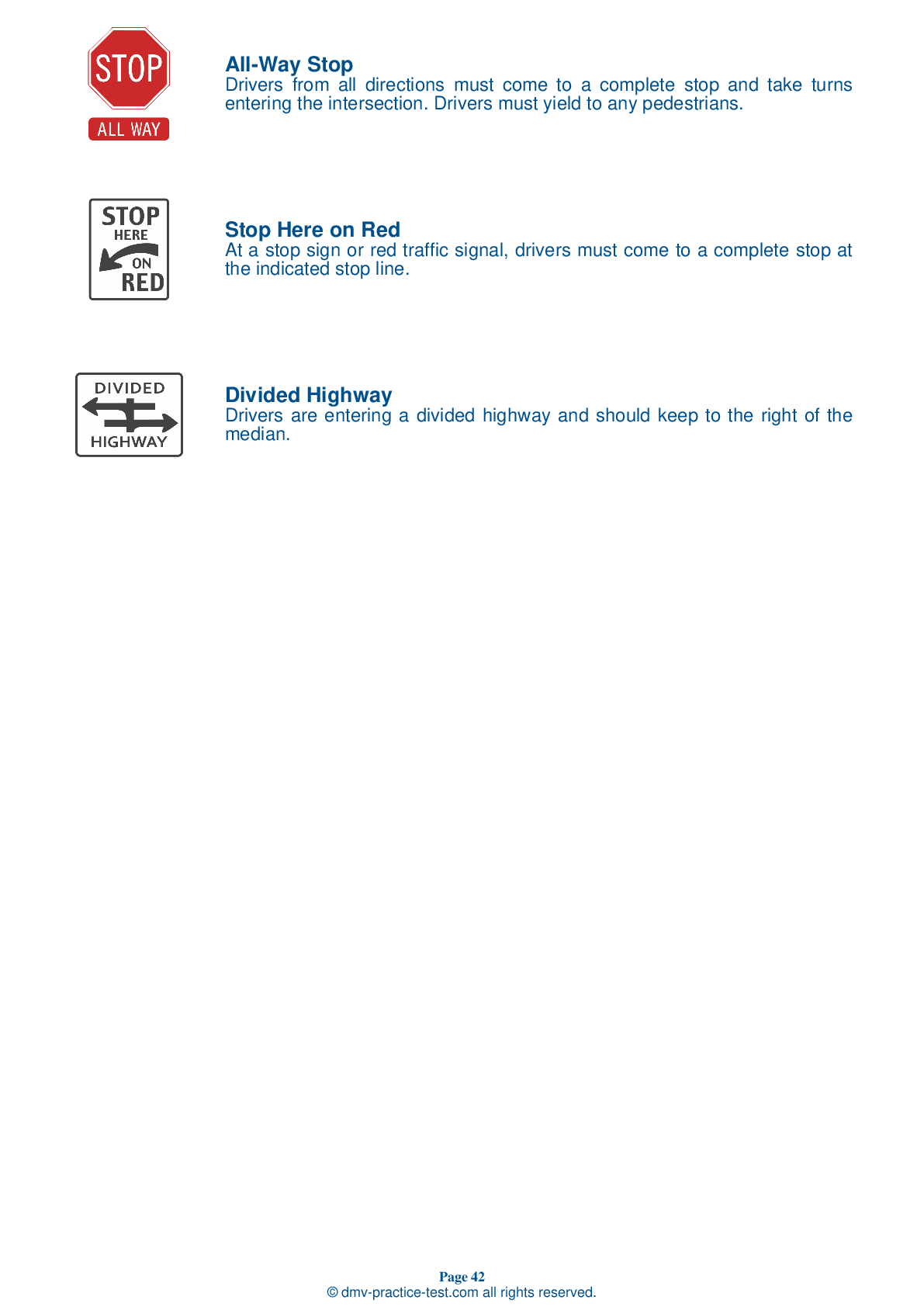FREE Indiana DMV Practice Test #4 Page 2 of 5
This set of Indiana DMV practise tests has been updated for January 2025. It includes questions based on the Indiana Driver Handbook's most significant traffic signals and laws for 2025. Use actual questions that are very similar (often identical!) to the DMV driving permit test and driver's licence exam to study for the DMV driving permit test and driver's licence exam.
On the practise exam, each question gets a tip and explanation to help you remember the concepts. The written component of the official Indiana DMV test will include questions about traffic rules, traffic signs, and driving statutes, as well as information from the Driver Handbook.
To obtain a passing grade, you must correctly answer 44 of the 50 questions. Take our DMV practise exam to help you prepare for your Indiana instruction permit or driver's licence.
The DMV exam is available in several languages.
Using any kind of testing assistance will result in an automatic fail, and the DMV may take additional action against your driver's licence, so stay away from it.
9 . When you see or hear an emergency vehicle coming, you should:
When driving on a two-lane roadway or undivided highway, you must yield to an emergency vehicle using its lights and/or siren, regardless of the direction from which it is approaching. Immediately drive as near as possible to the right side of the road and stop, taking care not to stop within an intersection.
10 . This sign means:
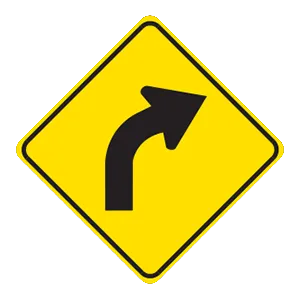
Warning signs prepare drivers for upcoming road conditions and hazards and are usually yellow with black markings. This sign alerts drivers to an upcoming curve in the road.
11 . To change lanes you should:
Before changing lanes, you should activate your turn signal in the appropriate direction and check your rearview and side mirrors. Look over your shoulder in the direction you plan to move in order to check your blind spot and check the far lane to be sure no one else is trying to enter the same lane as you. Change lanes when you are sure it is safe to do so.
12 . This sign means:

Regulation signs regulate traffic speed and movement, displaying rules which drivers must obey. This sign tells drivers the direction in which they must drive when turning onto a one-way street.
13 . Which of the following about winter driving is not true?
You should not use cruise control on snow, in rain, in fog, or under similar hazardous conditions. Winter is the most difficult driving season and requires extra caution from drivers. It is important to consistently check your antifreeze and windshield washer fluid levels. Using snow tires can increase a vehicle's traction on the surface of slippery roads.
14 . Lanes of traffic moving in the same direction are divided by ____ lines.
Solid white lines are used to separate lanes traveling in the same direction (as well as to mark the right edge of the road). Broken white lines separate lanes traveling in the same direction and may be crossed to pass. Yellow lines separate lanes of traffic moving in opposite directions.
15 . Pennant-shaped signs indicate:
Pennant-shaped signs usually indicate no passing zones. Text will also be on the sign to confirm that it is a no passing zone.
16 . A person who drives much slower than the speed limit:
Driving more slowly than the flow of traffic can be hazardous. If you are on a two-lane, two-way road and driving so slowly that traffic is backing up behind you, you are required to pull off the road and let the other vehicles pass. Only drive significantly under the speed limit when conditions require it.
Need Car Insurance? No problem!
Compare the best rates in Indiana and find a personalized policy that meets your needs.
1. Are You Currently insured ?
2. Married ?
3. Do you own your Home?
4. Do you have more than 1 car ?
5. Have you or a Family Member Honorably Served in U.S. Military ?
6. Your Name
7. Age
8. Zip code
IMPORTANT REMINDER:Auto Insurance is Mandatory to drive in Indiana. Get covered before you hit the road to avoid any fines.
Ranked by best match
